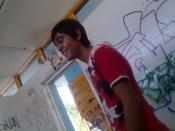Introduction
In the modern HRM practice, selection plays a very important role. It is very important for an organisation to be able to choose the right person when recruiting, especially when high ranks such as managerial positions are concerned. Beaumont (1993) explains the issue of importance as:
"The design of a selection system... supports the overall organisation strategy, the monitoring of the internal flow of personnel... matches emerging business strategies, and [there is] a need to match key executives to business strategies."(STOREY-A critical text, p.203)
"For the selectors, success will be written in sand and failure in stone"(BEARDWELL & HOLDEN, p.232) therefore special care must be given to the design of the selection. Although there are a few methods of selection there is no one best method but one must choose the right combination of methods to succeed in the aim of choosing the right employee.
As I have already mentioned, there are many methods but before we go on, we must discuss the two principal models, the psychometric and the social model.
The psychometric model is the one where all today's methods come under. Its focus is the job itself. In this model, performance criteria and the specific attributes are chosen on which the candidates will be assessed. This model also values individualism and managerialism. The main criticism about this model is that it is based on the assumption that attributes displayed by an individual remain stable and that objective selection is possible.
The social model which is what the modern HRM manager 'should' be using focuses more on the actual process of selection and the impact it has on the candidate, which is why it is deemed as a social process. This model is based on the assumptions that people constantly change and that subjective thinking is a...

![milano - hotel marriott, 10.02.2009 [SW interview]](https://s.writework.com/uploads/4/47227/milano-hotel-marriott-10-02-2009-sw-interview-thumb.jpg)

Little Help
Nice work but the title is what caught my attention... I think you meant Organizations? lol Otherwise, nice work.
4 out of 4 people found this comment useful.